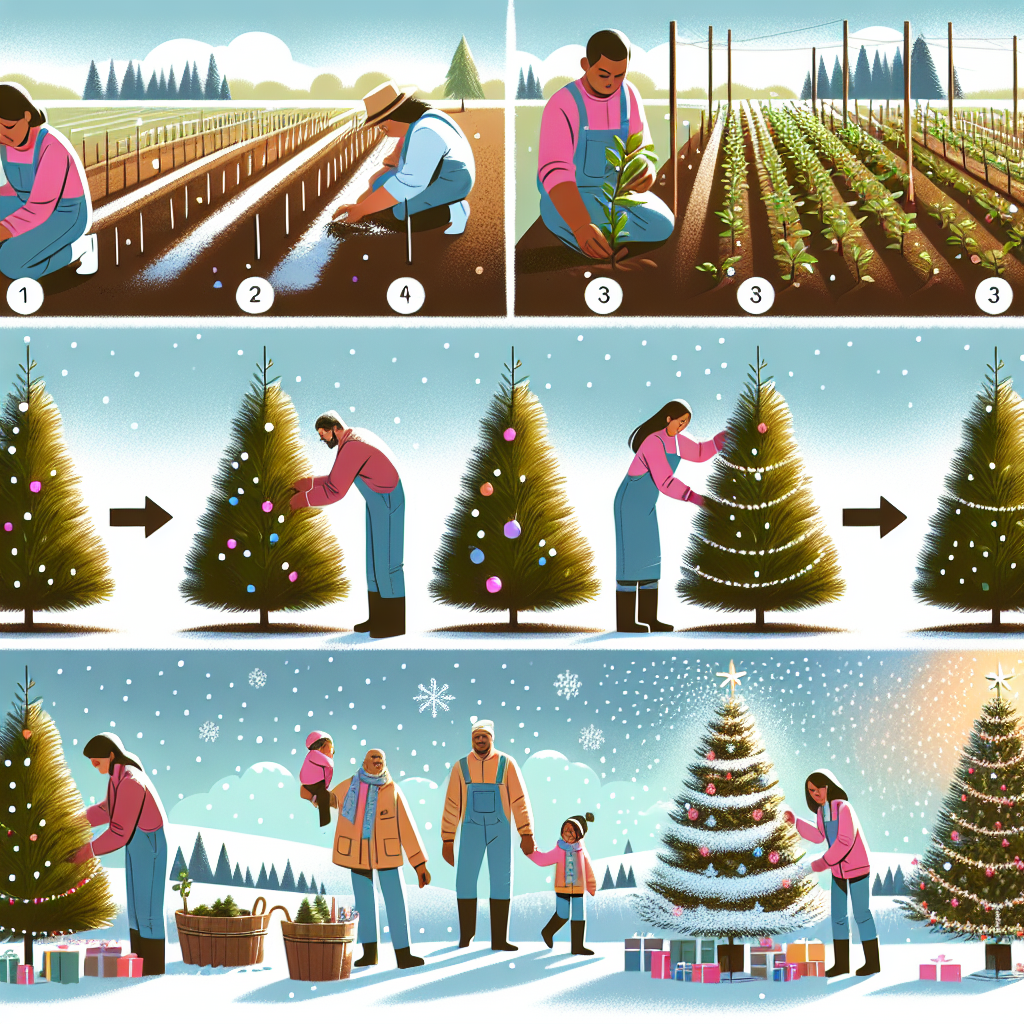
How to grow christmas trees
How to Grow Christmas Trees: A Comprehensive Guide
Growing Christmas trees can be a rewarding venture, especially if you love the idea of sharing holiday cheer with your own beautifully grown greenery. The right knowledge and techniques can make this process simpler and more enjoyable. In this article, we’ll cover everything you need to know about how to grow Christmas trees, from selecting the right species to managing their growth effectively.
Choosing the Right Species
The first step in your journey is to select the right type of Christmas tree to grow. Different species have unique traits that affect their growth, appearance, and adaptability to different environments. Here are some popular options:
- Fraser Fir: Known for its excellent fragrance and needle retention, this tree is popular in many households.
- Douglas Fir: Not technically a fir, its soft needles and sweet scent make it a favorite.
- Noble Fir: Highly regarded for its strong branches and beautiful blue-green color.
- Blue Spruce: Features stunning blue-colored needles and a symmetrical shape.
When selecting a species, consider your local climate, soil type, and market demand. Some trees grow better in specific regions, while others may have certain disease resistances that are beneficial in different environments.
Planning Your Christmas Tree Farm
Once you have chosen the species, it’s time to plan your farm. You’ll need to consider the following factors:
- Space Requirements: Christmas trees need ample space to grow and spread their branches. Depending on the species, you should plan for about 6 to 8 feet between each tree.
- Soil Quality: Aim for well-draining soil with a pH level between 5.0 and 7.0. Conduct a soil test to determine any necessary amendments.
- Accessibility: Design the layout for easy access to each tree for maintenance and harvesting.
Starting Your Trees: Seeds vs. Seedlings
You can grow Christmas trees from seeds or seedlings. Each method has advantages and disadvantages:
- Seeds: Growing from seeds allows for greater control over the growing process. However, it requires patience as germination can take longer.
- Seedlings: Buying seedlings is faster and can save time, but it may incur higher initial costs.
When deciding, assess your available resources, including time, budget, and expertise. Most new growers opt for seedlings to expedite the process.
Planting Your Christmas Trees
The planting process is critical for the health of your trees. Here’s how to do it effectively:
- Timing: The best time to plant trees is in early spring or fall. This allows for optimal root development before harsher weather conditions.
- Preparation: Clear the space where the trees will go. Remove competing weeds and debris that could inhibit growth.
- Digging Holes: Plant each seedling at the same depth it was grown in its container. Wide, shallow holes are best for root growth.
- Watering: After planting, water the seedlings thoroughly to help them settle in.
Caring for Your Christmas Trees
Regular care is paramount for thriving Christmas trees. Here are key aspects to monitor:
Watering
Newly planted trees need consistent moisture, especially during their first year. As a general rule, provide about 1 inch of water per week. Water at the base of the trees to encourage deep root growth.
Fertilizing
Fertilization should be done carefully. Use a balanced fertilizer in early spring to support growth. Typically, **high-nitrogen fertilizers** work best for young trees. However, avoid over-fertilizing, which could lead to excessive foliage at the expense of root development.
Weed and Pest Control
Regularly clear out weeds that compete for nutrients and water. Also, monitor for pests that may harm your trees:
- ***Aphids***: Small, sap-sucking insects that cover new growth.
- ***Spider mites***: Tiny pests that can cause needle discoloration.
- ***Pine beetles***: These can bore into the bark, leading to tree death.
Natural pest control options, like introducing beneficial insects, can help minimize infestations without harsh chemicals.
Pruning Techniques
Proper pruning is essential for shaping your trees and encouraging healthy growth. Here are some important tips:
- Annual Pruning: Begin pruning when the trees are about 2-3 years old, usually in late winter to early spring.
- Remove Dead Branches: Regularly check for and remove any dead or diseased branches to promote better airflow.
- Shaping: Trim the tops to encourage a desirable shape, making sure to leave enough growth to retain the tree’s natural form.
Harvesting Your Trees
After several years of care, your Christmas trees will be ready for harvest! Here’s how to go about it:
- Timing: Harvest in late autumn or early winter when the trees have reached the desired height (usually between 6 to 8 feet).
- Cutting Techniques: Always use sharp saws to ensure a clean cut. Make the cut as low as possible without damaging the roots.
- Transporting: Use a tree cart or trailer to safely transport the tree to your selling area or home.
Marketing Your Christmas Trees
If you're planning to sell your Christmas trees, an effective marketing strategy is essential. Here are a few ideas to consider:
- Local Events: Participate in local farmers' markets or holiday festivals to showcase your trees.
- Social Media: Use platforms like Instagram and Facebook to share photos and updates about your farm.
- Community Engagement: Consider offering workshops or educational tours about how to grow Christmas trees, drawing more visitors to your farm.
Conclusion
Growing Christmas trees can provide not only a source of income but also a fulfilling way to contribute to the festive spirit during the holiday season. With just the right knowledge on how to grow Christmas trees, including species selection, planting, and care techniques, you'll be well on your way to managing a thriving Christmas tree farm. Remember, patience and passion will guide your success as you nurture your trees to maturity!
"The beauty of a Christmas tree is not just in its shape or fragrance, but in the time and love invested in its growth." - Author Unknown
By Guest, Published on October 9th, 2024